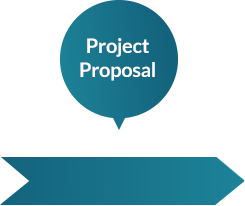Investigating Cellular Therapeutics for Aneurysm
Grant Project Details:
Grant Location
Grant Description
About six million people in the United States have an unruptured brain aneurysm, according to the Brain Aneurysm Foundation, which means that one in every 50 Americans have a bulging, weak area in the wall of an artery that brings oxygen-rich blood to the brain. The weak areas of the arteries may rupture and hemorrhage, spilling blood instead of delivering it to cells throughout the body. A ruptured artery in the brain causes a stroke. Also, 85 percent of aneurysms go undiagnosed until after they rupture, and one-third of patients with ruptured aneurysm die before they even get to the hospital. Therefore, it is essential to treat aneurysms before they rupture.
Doctors currently treat unruptured intracranial aneurysms (UIA) by blocking the aneurysm to prevent blood from entering the weak ballooned portion of the artery. There are two main ways of doing this: clipping and coiling. Clipping involves doctors exposing the brain to look for the aneurysm and clamping it closed with a titanium clip that remains on the artery permanently to prevent blood from entering the aneurysm. Coiling involves surgeons feeding a catheter into a blood vessel in the thigh and threading it up to the site of the aneurysm in the brain. The surgeon then feeds platinum coils or acrylic glue through the catheter to fill the aneurysm so that blood cannot enter it.
Both approaches present a high risk for danger, complications and long-term recurrence rates. The surgical stress from either procedure can cause the unruptured aneurysm to burst, resulting in stroke or death.
Doctors need a better therapy to treat aneurysms or intervene before they rupture without causing side effects associated with clips and coils. Delivering mesenchymal stem cells (MSCs) directly to the site of an intracranial aneurysm using CellGuide, a revolutionary catheter-based device, could be a less invasive approach to stabilizing or repairing aneurysms before they rupture.
MSCs are adult stem cells normally found in bone marrow. These stem cells have anti-inflammatory and immune modulatory properties; they help reduce swelling associated with aneurysms and boost the immune system to help the body heal itself. Delivering MSCs to the site of aneurysm will reduce local inflammation and promote the growth of new cells in a way that will stabilize the aneurysm and reduce the risk for rupture. As an added benefit, the surgeon will not need to leave a coil or clamp inside the patient, resulting in fewer side effects and more effective therapy.
The advanced imaging used in this project finds aneurysms in hot spots and dangerous regions where they can be difficult to treat. Imaging is essential because it gives the surgeon an understanding of who has a risk for rupture. It can also help detect inflammation near an aneurysm.
Inflammation makes aneurysms unstable and prone to rupture. Aneurysms that are not inflamed are usually more stable and do not require treatment. Surgeons often recommend “watchful waiting” in these cases, a process which can be quite stressful for patients. Injecting stems cells directly into these aneurysms would provide a safer alternative to older procedures and allows surgeons to treat even these small aneurysms.
CellGuide will be the first product of its kind on the global market, positioning Minnesota as a leader in the neurovascular field. Technological innovations like this may help thousands of Minnesotans with UIAs prevent strokes in the future.
Grant Awardee Biography
Dr. Brenda Ogle is an Associate Professor of Biomedical Engineering at the University of Minnesota, Twin Cities. Dr. Ogle is a biomedical engineer who seeks to better understand the conditions that govern stem cell fate to enhance the regenerative capacity of mammalian systems.
Dr. Andrew Grande is a neurosurgeon with a special interest in stem cell therapies for the brain. Originating from the Twin Cities, Dr. Grande attended the University of Minnesota Medical School before completing his neurosurgical training at the Mayfield Clinic and University of Cincinnati. As Director of Earl Grande Stroke and Stem Cell Laboratory at the University of Minnesota, Dr. Grande focuses on bringing stem cell therapies for stroke out of the laboratory and to the patients who need them.


